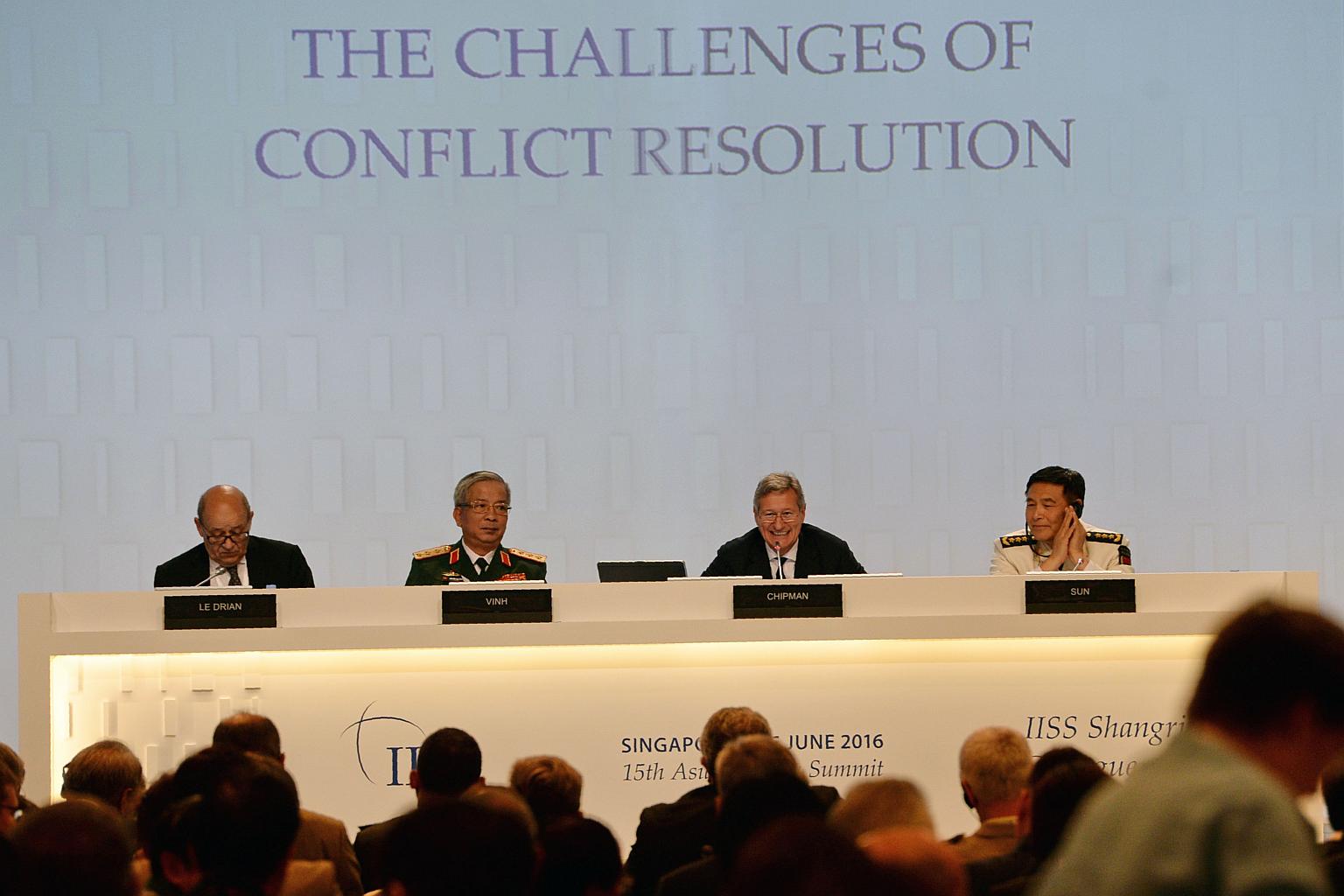S. China Sea a test case of managing strategic evolution: Vivian
Sign up now: Get ST's newsletters delivered to your inbox

(From left to right) French Minister of Defence Jean-Yves Le Drian, Vietnam's Vice Minister of Defence Nguyen Chi Vinh, director-general and chief executive of IISS John Chipman, and China's deputy chief of general staff of the Chinese PLA Admiral Sun Jianguo at the 15th IISS Shangri-La Dialogue in Singapore on June 5.
PHOTO: AFP
Follow topic:
The South China Sea may have dominated debate at the Shangri-La Dialogue, but it is just a symptom of an ongoing strategic evolution in which the contested waters are the focal point, Foreign Minister Vivian Balakrishnan has said.
And the South China Sea "is a test case of how we will manage this ongoing evolution without upsetting or destroying the enormous opportunities that are available to the rest of us", he said yesterday at the IISS South-east Asian Young Leaders' programme, held on the sidelines of the security summit.
Using Singapore's 50 years of development as a nation - and by extension that of the region - as a backdrop, he painted the picture of the United States as a benign influence that has given Singapore and the region access to economic opportunity, technology and markets that spurred Singapore's success.
Also in the last 50 years, he said, the key transformative narrative in the region has been "the story of China" and its opening up that has made it a top trading partner of Singapore and most Asean members. China is "a here and now reality, and it is a growing reality".
The "opportunities for China to make a difference on a global stage, if properly managed, would be an enormous constructive force", he said, adding that this is an ongoing evolution.
"What we are trying to avoid in South-east Asia is a zero-sum mentality. Because if you get caught in a zero-sum mentality, you will be forced to make some very invidious choices," said the minister.
"And here, with due respect to my American friends, this concept that you are either with us or against us is unhelpful," he said, adding that he would take the same approach with "my Chinese friends as well".
What is needed then is "an inclusive strategic architecture" and to show "mutual respect that all countries are equal regardless of size, and pursue the peaceful resolution of conflicts within a rules-based order".
In the same vein, Defence Minister Ng Eng Hen in his speech at a plenary session of the Shangri-La Dialogue said the rivalry between the US and China in the South China Sea has upped the stakes beyond "disputed rocks and islands" to a contest for economic and diplomatic influence.
Asked if the existing security architecture has excluded China, Dr Ng said he found the view "puzzling" as China is part of the Asean Defence Ministers' Meeting-Plus (ADMM+) grouping and has taken part in multilateral exercises.
He then invited his Chinese counterpart Chang Wanquan to attend the Shangri-La Dialogue. The last time China sent its defence minister was in 2011. "Minister Liang Guanglie has come and it was a very good speech (that was) well received. We'll be delighted if Minister Chang comes. "
• Additional reporting by Jermyn Chow

